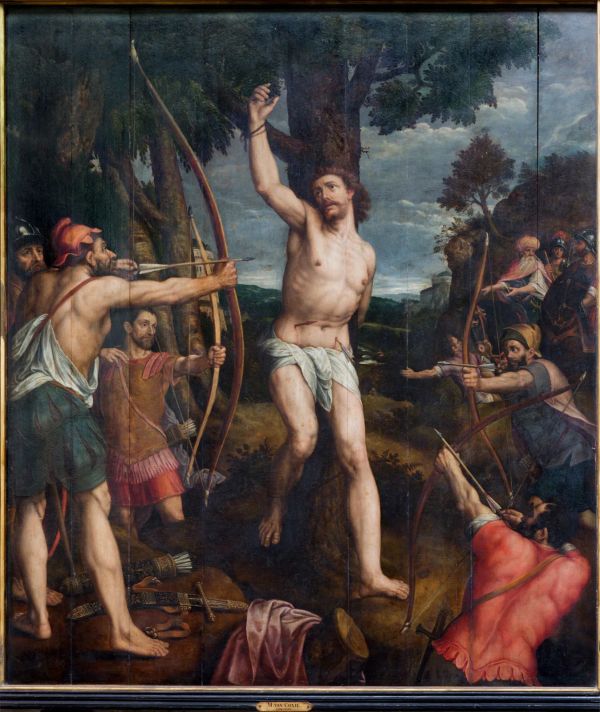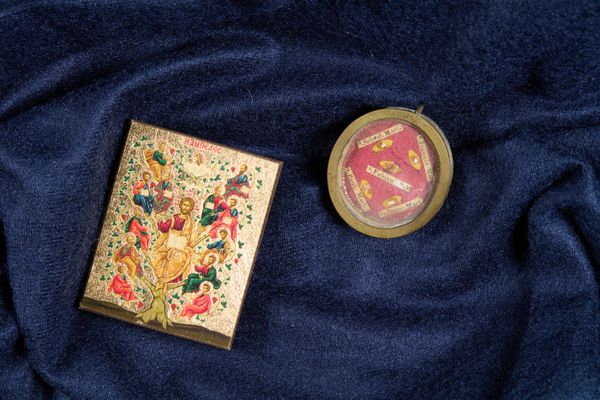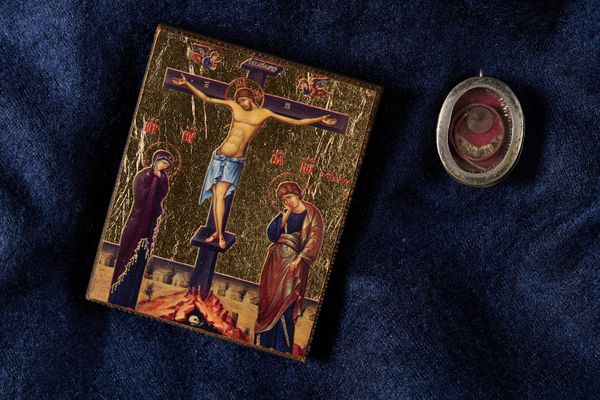Sebastian was a Roman martyr, was venerated in Milan even in the time of Saint Ambrose and was buried on the Appian Way, probably near the present Basilica of St. Sebastian. Devotion to him spread rapidly, and he is mentioned in several martyrologies as early as 350.
The legend of Saint Sebastian is important in art, and there is a vast iconography. Scholars now agree that a pious fable has Sebastian entering the Roman army because only there could he assist the martyrs without arousing suspicion. While serving as a Praetorian Guard, Marcus and Marcellian, twin brothers, were imprisoned for refusing to make public sacrifices to the Roman gods. The brothers were deacons of the Christian Church. During their imprisonment, their parents visited them to implore them to renounce Christianity. However, St. Sebastian convinced both parents to convert to Christianity. St. Sebastian also converted several other prominent individuals, including the local prefect.
This led to his discovery and he was reported as a Christian to Emperor Diocletian in 286. The Emperor, who was already infamous for ordering the deaths of hundreds of Christians, scolded Sebastian and ordered him to be killed by having him tied to a stake on a training field and used as target practice. Archers riddled his body with arrows, his body was described as, "full of arrows as an urchin." Believed to be dead, the archers left his body for retrieval and burial. He was recovered by Irene of Rome, whose Christian husband was a servant to Diocletian and also martyred. Irene discovered that Sebastian was still living and she hid him and nursed him back to health.
Once well, Sebastian went in search of Diocletian to surprise him. He managed to catch Diocletian by a stairwell and proceeded to criticize him loudly and publically for his persecution of the Christians. Diocletian, surprised that Sebastian was still alive, was immediately taken aback, but recovered his composure. This time, he would not permit Sebastian to escape with his life. He ordered his former guard to be beaten to death with clubs, then thrown into the sewers.
His body was recovered by a Christian woman, named Lucina, and she secretly buried him in the catacombs beneath Rome. Nearly 80 years after his death, around 367, his remains were moved to a basilica in Rome, built by Pope Damasus I. His body, or at least some relics from his body were reportedly removed and shared with a community of monks in France. His cranium was sent to a German monastery where it was placed in a special silver case in 934. The relic remains in its case today in a special reliquary in Ebersberg.
Credits:
Discriptions of saints lives and biographies have been excerpted, summarized, or compiled from
Franciscan Media,
CatholicSaints.Info,
Catholic Online, and
Wikipedia.


